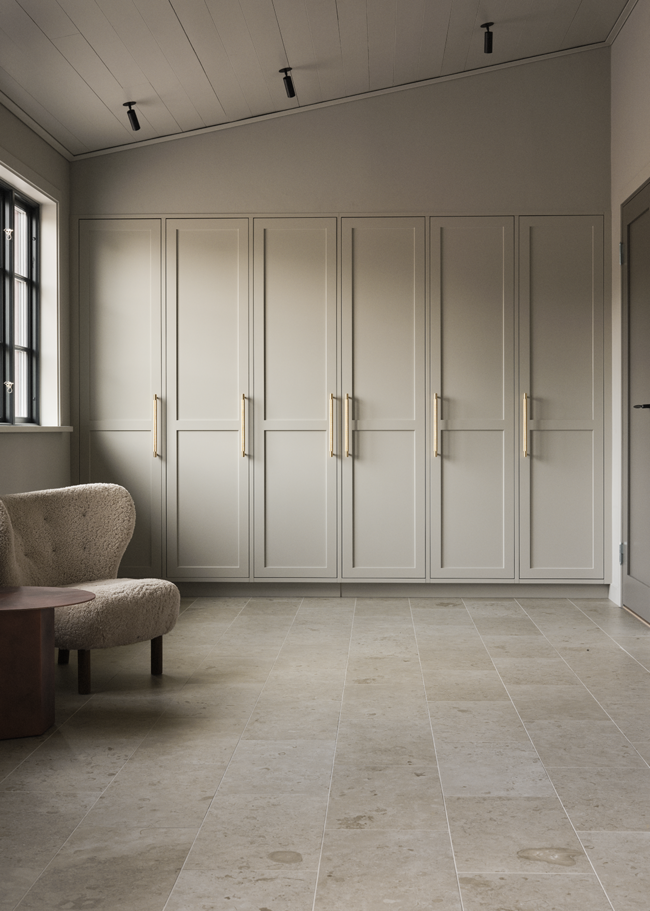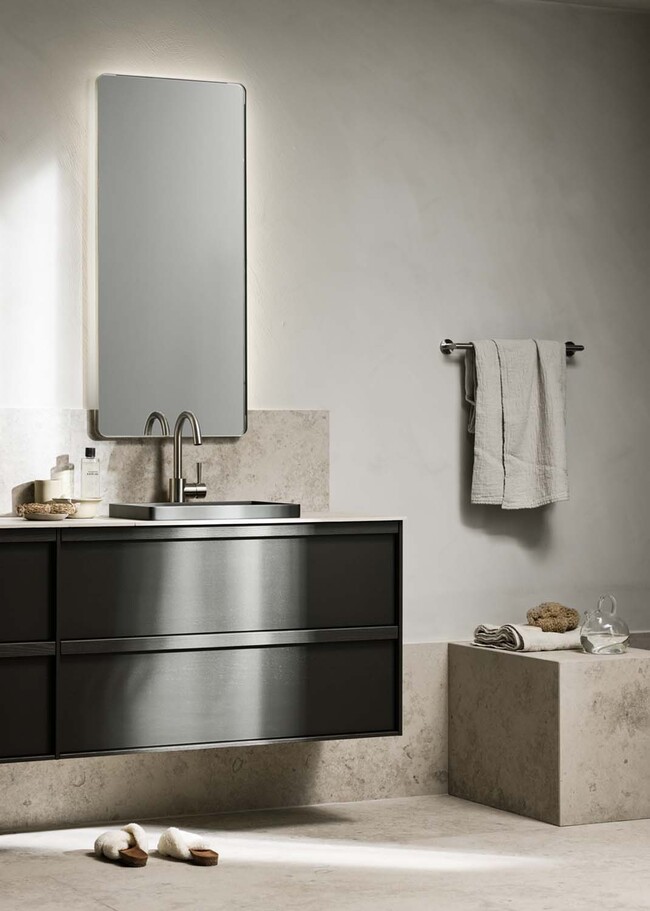Size guide for Floor & Wall tiles
Choosing the right size of tile is an important part of creating a functional and harmonious space, whether it’s for a bathroom, kitchen, hallway, or outdoor area. The size not only influences the feel of the room but also how the surface performs in practice. In this guide, we’ll walk you through how to think when selecting the ideal tile format for your project.
.jpeg)
Why does the size of tiles matter?
When choosing wall or floor tiles, size is more than just a matter of taste, it affects both the room’s appearance and how the surface works in everyday life. The right format can enhance the feeling of space, simplify maintenance, or highlight a certain style. Here, we'll walk you through how the size of tiles makes a difference, both visually and practically.
Size affects how the room is perceived
Larger tiles can create a sense of space and calm, especially in smaller areas, as fewer grout lines give a more seamless look. Smaller tiles, on the other hand, can highlight details and create a livelier overall impression. How the room is perceived also depends on how the tiles are laid. Horizontally placed, longrr tiles can make a room appear longer, while vertically placed, longer tiles give the impression of greater height.
Practical aspects
Larger tiles mean fewer grout lines, which also means less maintenance and easier cleaning, but they require a flat and even surface for a smooth and durable result. Smaller tiles are more forgiving during installation but involve more grouting work.
Different sizes suit different styles
The tile format affects the overall look. Large tiles work well in minimalist and modern spaces, while smaller tiles are ideal for more classic or rustic styles with patterns and variation.


Common tile sizes and their uses
Small tiles (5x5 – 15x15 cm)
Small tiles are perfect when you want to create patterns or follow curved surfaces. They are often used as kitchen backsplashes or as a decorative detail in shower niches. Thanks to their small format, they are easy to shape around corners and uneven surfaces, but they require precision during installation and involve more grouting.
Medium tiles (30x30 – 60x60 cm)
A flexible size that works in most rooms and environments. This size offers a good balance between practical qualities and aesthetic appeal. They are often used in bathrooms, kitchens, or hallways where both durability and visual harmony are important.
Large tiles (60x60 cm and up)
Larger tiles create a seamless and harmonious impression, with fewer grout lines that give the room a calmer look. They are popular in modern bathrooms and open-plan layouts but require an even surface and precision during installation. Suitable for both floors and walls, but the weight of the tiles has to be kept in mind when mounting.
Large formats & XL tiles (e.g. 60x120 cm)
Extra-large tiles create an exclusive feel and work equally well in homes and public spaces. With fewer grout lines and a generous format, they provide a refined and minimalist result. However, these tiles require professional handling during both transport and installation.
.jpeg)
How to choose the right size for different rooms
Different rooms have different needs, both in terms of function and feel. By adapting tile size to the space, level of wear, and style, you can create a design that is both practical and visually appealing. Here’s a guide for some of the most common areas in the home.
Bathroom
In shower areas, smaller tiles are often the best choice, as they make it easier to create the correct slope for water drainage. On walls, large tiles can give an elegant and harmonious impression. Keep in mind that large tiles in small bathrooms can enhance the feeling of space. Combining different sizes within the same bathroom can also create an interesting and balanced overall look.
Kitchen
In kitchens, small tiles work perfectly as a backsplash above countertops. On the floor, both medium and large tiles can work well, depending on the size and layout of the kitchen. Darker grout on the floor can be a practical choice that makes maintenance easier. Consider how the tile size and laying pattern interact with the kitchen’s design and lines.
Hallway & entrance
In the hallway, durability and slip resistance are particularly important. Choose tiles that are hard-wearing and designed for high traffic. Medium to large tiles are practical to keep clean and create a welcoming feel. The right choice delivers both function and style from the very first impression. A carefully chosen tile size in the hallway can also help create a more cohesive look with surrounding rooms.
Outdoor areas
For patios, terraces, and pathways, tiles measuring 60x60 cm are a popular choice. They create a modern look and withstand both frost and heavy use, provided the base is properly prepared. Choose a color and format that harmonise with the facade and the style of the garden. Large tiles with the right surface texture also provide a more stable and comfortable surface to walk on.
.png)

Practical tips for choosing the right size
Plan carefully to avoid narrow cut strips along edges and corners. Also consider grout placement and width, especially with larger tiles, which require an even surface for smooth installation. Small details can influence the overall look more than you might think, so use design software or templates to visualise the result before starting the work.
Common mistakes to avoid
Avoid using tiles that are too large in small spaces where a slope for water drainage is needed, such as in showers. Incorrect grout width or poor placement can negatively affect both function and appearance. And remember, very large tiles require experience. In these cases, it’s often wise to call in a professional.
A thoughtful choice that lasts
Whether you’re planning a new bathroom, a welcoming entrance, or a kitchen built to last, the choice of tile size plays a crucial role. By taking into account the size of the room, its intended use, and your personal style, you’ll find it easier to make the right choice. With careful planning and an eye for both the big picture and the small details, you’ll achieve a result that lasts over time, both aesthetically and functionally.